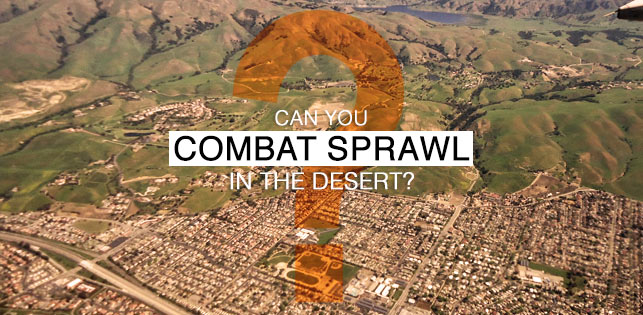
13 May Is it Possible to Combat Sprawl in the Desert?
Often times when I speak to people about Phoenix who are visiting here for the first time, they comment on how different it is than wherever it is they came from. This doesn’t seem like a revelation, in and of itself, but it’s why they are saying it that counts.
The greater Phoenix area is the quintessential “west,” at least in an historical sense. People came here for the space and opportunity they didn’t have “back east.” They came here for dry weather and perfect winters. They came here for breathtaking scenery and unbelievable sunsets. And frankly, who could blame them? The problem is, some of the very reasons this city developed the way it did is because of why it was developed at all.

Phoenix’s Place in History
At first, when immigration was low, this created little issue. The urban core of the city was in the very place it is now, thriving (at least at the scale appropriate for the time), and even included a very successful electric streetcar. It wasn’t until the advent of air conditioning, the G.I. Bill, and the overall “American Dream” that this city saw its first glimpses of widespread urban sprawl. Really, it’s Los Angeles’ fault, but for now we will focus on our own issues instead of spreading the blame around. Actually, scratch that. Had L.A. not abandoned their own plans for trains and density (like their big brother to the north, San Francisco) in exchange for suburban paradise and mass, interconnected highways, we could be having an entirely different discussion right now. Thanks a lot, Los Angeles.
Anyway, I digress, as I am wont to do. The issue here is that Phoenix has a sprawl problem. The thing visitors can’t quite put their finger on, so to speak, is the vastness of the landscape…the concrete and stucco landscape that is, not the aforementioned desert vistas. They can’t quite figure out how our massive, terrific streets work. Most of the big cities in the world have a small geographical footprint, but a ton of density, both in population and infrastructure. We mostly have the opposite, yet rank among the most populous nationally. It’s the need to drive everywhere that disincentivizes walkable, tree-shaded streets and street-front commerce.
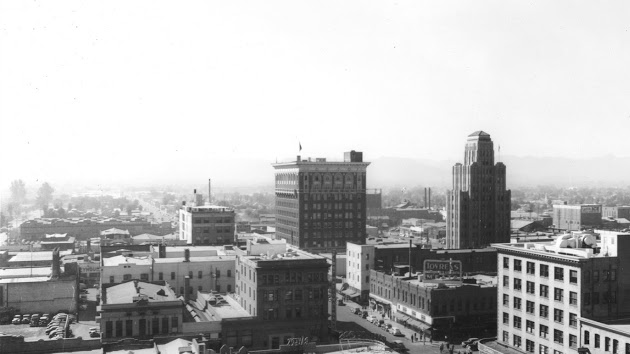
In a city where you get in your car in your personal garage, drive on giant highways to your job, then can run all your errands in massive strip malls before pulling directly back into your personal garage there is just no reason to combat sprawl on a personal level. It’s cheap, comfortable, and convenient.
Why Sprawl Hurts Cities
The thing is, there are numerous reasons to combat sprawl on a governmental level. The one most likely to touch home with families everywhere: health. At its simplest level, communities reliant on cars for transportation create significantly more air pollution and with that more respiratory problems. When cities plagued by sprawl commit to density, vehicle pollution decreases dramatically.
Reliance on personal cars for travel also lessens the physical activity you would otherwise be getting in a bikeable and walkable city. You may scoff at the idea of getting your exercise by just walking, but spend a night shopping/bar-hopping/doing whatever on foot or on a bike and you will quickly and effortlessly accumulate mileage, all while enjoying the scenery and emitting no carbon emissions. By reducing local airborne pollution and getting more physical fitness, we can lower our healthcare costs by reducing respiratory conditions and other physical conditions. What this means is there is a measurable financial benefit to getting people out of their single occupancy SUVs and onto their two feet.
The health of the environment around you is also very important. With sprawl and widespread use of roads and personal cars, there is a large uptick in surface runoff of pollutants, not to mention the land use of the sprawl itself. Think about it, if the majority of the Phoenix metro-area population lived in even half of the geographical area, there would still be vast Sonoran desert to look at! Isn’t that why we all came here?
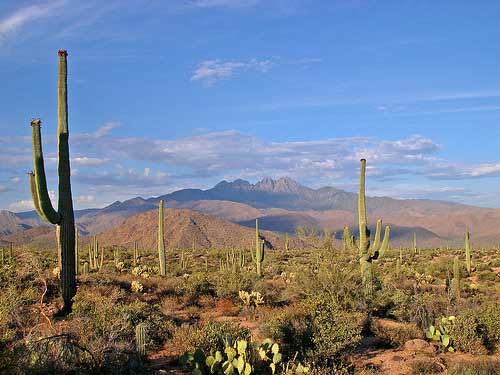
Photo credit: AZHotAirBalloons
If I was a settler searching for land “out west” ages ago, I would not traverse the plains of this fine country from Ohio (or whatever, probably) just to find stucco and concrete as far as the eye can see. I think I’d prefer the beautiful Saguaro cacti and the delightfully fragrant Creosote as my chosen scenery. (To be fair, before this place sprawled out of control, it was very much covered in agriculture. That picturesque Sonoran desert had already been erased in favor of citrus and cotton in much of what is now cul-de-sacs and inexplicably located office parks.)
Photo credit: Rogue Columnist
So, how do we fix it?
What I propose is an urban sprawl limit. An actual, defined boundary imposed by the local government that incentivizes development in the urban core of Phoenix, and penalizes (probably not a great word choice for lovers of space and haters of governmental oversight) development on the outskirts. As you read this you might be saying, “Hey, guy, isn’t it sort of too late for that? Look at how massive this city is”. Think about all the random outlet malls and walled-in suburban oases we could avoid just by incentivizing development among other, existing development. Is it really practical to live in, say, Maricopa (town, not county) or Anthem? Why is there a bounty of discounted big-box retail several miles north of the city on the way to Sedona and Flagstaff? Why are there strip malls on your way into Phoenix from L.A. (again, thanks a lot, L.A.)?
With an actual limit on growth, we could see density jump significantly. There would be more opportunity for small, local businesses to cater to a larger percentage of the population. There would be legitimate incentives for the state to invest in expansive light rail additions, lessening our reliance on cars as a whole and connecting parts of the city never before accessible to one another in a convenient way. Do you know what that does? It allows people without personal cars to broaden their job searches geographically, spreading wealth around the city and boosting the economy (people love job-creation and boosts to the economy, right?). With more community interconnectedness and fewer cars, there would be valid reasons to turn our wealth of blacktop parking lots into green spaces and mixed-use urban areas, both of which we sorely lack.
Who here has done some shopping, via personal car, and parked in a giant parking lot at a busy store in the summer? All of you, probably, and it is the worst. You can feel the heat melting the soles of your shoes as you make the intrepid journey to those automatic, sliding doors, surviving only because of the massive rush of conditioned air that blasts you as the sensor is tripped. While I’m not about to deny the convenience of giant shopping centers occupied by big-box stores, I will say those same conveniences are fully attainable in a dense, urban environment. I have run errands via train in New York and I’m telling you, it’s not worse than the soul-melting reality (see what I did there?) of Phoenix summer shopping centers.
Successes and Failures of Urban Growth Boundaries
Now, to be sure, there are massive hurdles for a defined, enforced urban sprawl boundary. For one, this assumes the local governments can get behind this. Second, this assumes the population that elects these officials also cares about this. To both of those, I am not so sure.
But there is proof of success in sprawl limits.
In a study comparing the growth patterns of England and Germany, it found that England’s policy of installing “greenbelts” and using techniques of brownfield reclamation and infill, versus Germany’s plan of “strategic spreading” into rural areas while managing land use, grew four times slower than Germany and used 6 times less land. What this shows is that even though Germany wanted to plan smartly for land use and land cover change, they were unable to limit sprawl. Meanwhile, England inserted more green spaces and used otherwise useless lots and created smart growth, while avoiding expansion into the surrounding rural land.
Photo credit: Rogue Columnist
Stateside, in the case of mid-century Boulder, Colorado, the town was expanding quickly. The people of Boulder were not so into this; concerned about the land and water use, while thinking about the future of the city and how it could sustain growth like it was experiencing. The approach they took was largely based on infrastructure. The citizens created a plan called the “Blue Line.” This was an amendment to the city charter that restricted city water services expanding past the established growth limit. Additionally, they initiated a tax specifically designated to preserving open space. Versions of this plan have been revised and added to since the original “Blue Line.” They have defined the geographic footprint of the town, continuing the limit on growth even as the population of Colorado was growing, while still adapting to the changing needs of the city.
What’s Smart and What’s Not?
The popular term for programs limiting urban sprawl is “smart growth.” This is defined as” [quote]“A policy framework that promotes an urban development pattern characterized by high population density, walkable and bikeable neighborhoods, preserved green spaces, mixed-use development, available mass transit, and limited road construction.”[/quote]
The most notable in the United States is in Portland, Oregon, where in the 1970s they established a plan based on developing around the inner city. Since then, several cities have adopted similar plans, achieving high rates of success. The central theme of it all is to create communities that are inclusive, convenient, and thriving.
Opponents of smart growth and overall sprawl limits often cite rising housing prices as the biggest risk. With increasing population but a defined limit on growth, prices will rise. Supply and demand at its simplest. To be sure, this is a real risk. In a city this built out, creating density runs the high risk of gentrifying a neighborhood. To run out the lower income members of a community in the name of fancy condos is not the same as smart growth. That is why the concept of “deliberative democracy”, as proposed by David B. Resnik, JD, Ph.D, is so important to go along with smart growth. In a nutshell, this is the direct voting of the citizens on issues, rather than our elected officials doing the voting. This is a plan that would aim to ensure equality in the city’s growth, and that is of paramount importance.
How Phoenix Could Benefit
Now, Phoenix has a real opportunity here. After the housing bubble exploded in 2008, Phoenix was the poster child of what doesn’t work long term. This city more or less defined what’s unsustainable, both economically and environmentally. If the identity of your community is that it’s filled with beige-colored, empty housing developments in the extreme exurbs of the city, then it’s no community at all. If we go out of our way to spread the people out as much as possible, how do you get involved in your community and collaborate with your neighbors?

Photo credit: KPBS
Since the bubble burst, development along the light rail corridor has grown dramatically. A study done by BAE Urban Economics found that in 2010, there was an unmet demand for over 60,000 housing units within a half-mile from the light rail itself, with a projected demand for another 70,000 units by 2040. Conservative (or should I say traditional?) members of our community and local government opposed the planned light rail project with complaints of economic damage (during construction, mostly) and projections for failure. Since the rail started operating in mid-2009, the rail line has blown away projection numbers and grows in ridership consistently year-after-year. The investment in development of the light rail corridor in Tempe, Mesa, and Phoenix is tangible and beneficial to everyone, provided they’re willing to leave the ‘burbs to experience it.
Photo credit: Trip Advisor
Phoenix has the opportunity to correct the mistakes of American-dream era expansion and push forward to a more modern era of smart growth. That thing new visitors notice, where they’ve never seen a place so spread out and bland, can be a thing of the past. We could have a thriving urban core where people come to experience the arts and culture, business and commerce, and incredible weather (most of the year). Simply put, it’s not as if we need to tear down the existing neighborhoods and golf courses. We just need to stop expanding into the furthest reaches of our city and focus on creating smart growth within the infrastructure we already have. I think if you incentivize developers (while creating jobs!) to plan and build near the city’s urban core, we could achieve the Phoenix we all want. To be as corny as possible here, can’t Phoenix rise from the proverbial ashes of vacant lots and develop smartly (pun very much intended)? I sure think so.




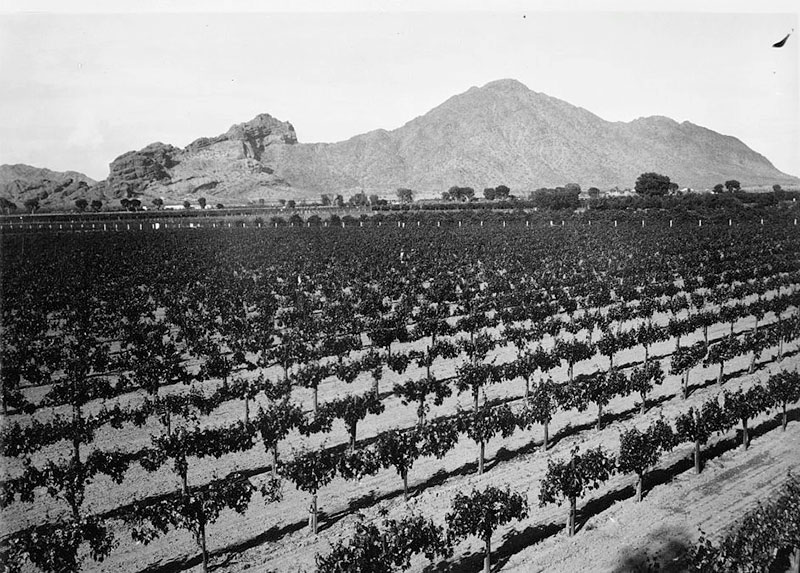
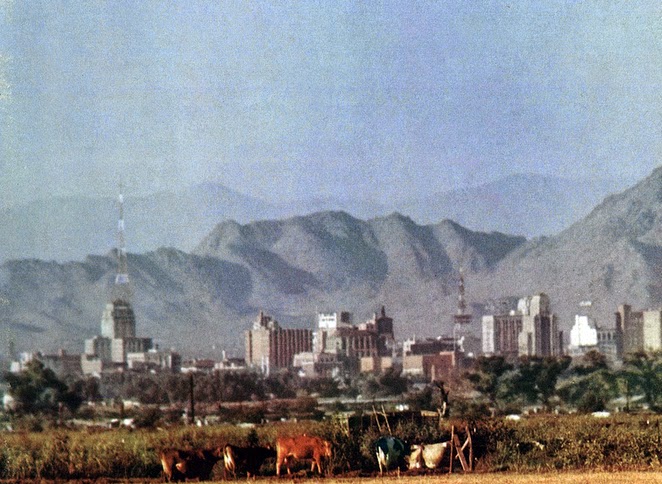
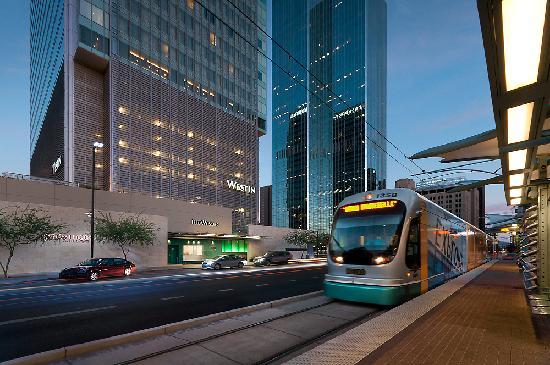
Sally
Posted at 06:44h, 16 MayGreat article Grant, Jack also read it and agreed